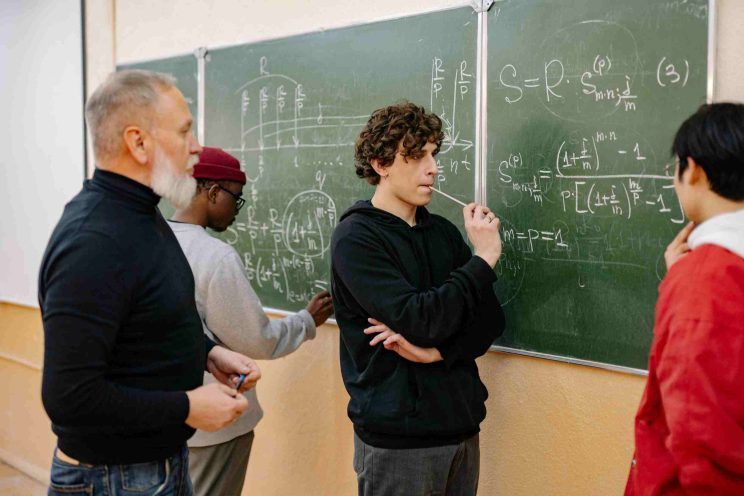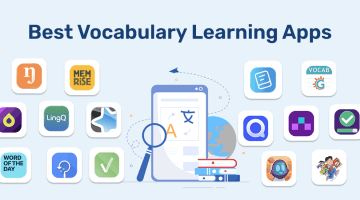Teaching Strategies 2025
reviewed by Jo-ann Caballes
Updated on August 26, 2025
Teaching strategies aren’t something that is set in stone and continue to evolve every year. Even though traditional educational strategies like teachers teaching in front of the classroom seemed to work for decades with little to no adjustments, the digital age has brought along numerous challenges. Teaching methods for kids require new strategies, so educators have started incorporating new and fresh teaching techniques to meet the needs of today’s education. Let’s explore some of the trends of 2025 for effective teaching.
What are teaching strategies?
Teaching strategies are methods of teaching to ensure that children learn as effectively as they can. Effective teaching strategies should enhance students’ comprehension, engagement, and retention of the concepts they learn. There are plenty of teaching strategies out there, but they don’t always work the same for everyone; sometimes, teachers have to adjust their strategies for the sake of the children. Nonetheless, good teaching strategies involve personalized learning, adaptability, and engaging children in active learning. Using a combination of these strategies, teachers create a dynamic and efficient learning environment. So, to give you a better idea of effective teaching strategies, here are a couple of examples.
Math teaching strategies by Brighterly
Online math tutoring platforms like Brighterly recognize how important it is to make math accessible to every student. However, not every student would be keen on practicing math daily or at least every other day.
Here are 5 most effective teaching strategies Brighterly’s tutors use to keep your kid interested in math.
- Understand why math is important
- Make math fun
- Implement quizzes
- Adapt teaching strategy
- Be proactive
Brighterly teaching strategy #1: Understand why math is important
Many kids think they only need math for good performance in school; they don’t understand the real reason why math is important and how they can apply it in real-life scenarios. This is why they need to know why they are learning math concepts, how they are going to be useful in their day-to-day life, and why they need to practice math more often.
Brighterly’s tutors make math a part of the conversation, letting the kids know how they can apply it outside the class.
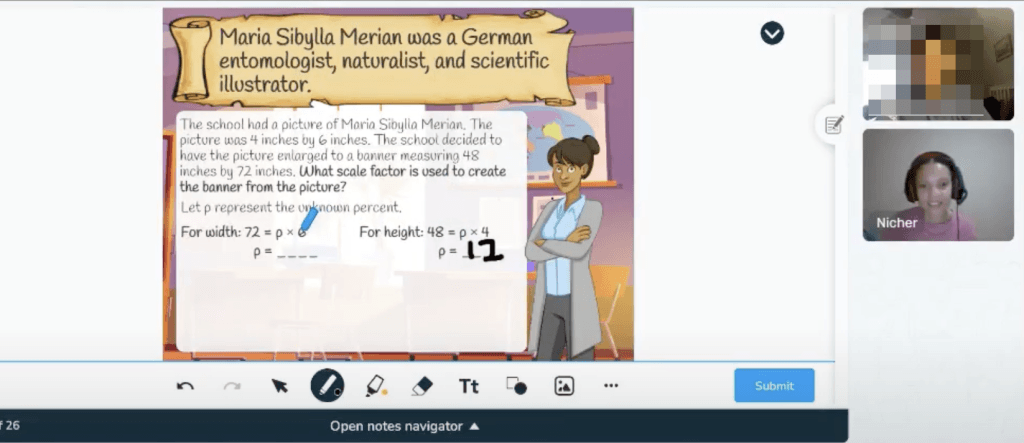
This effective teaching strategy allows tutors to know the kid’s thought processes and how they can use them to adapt their teaching.
Brighterly teaching strategy #2: Make math fun
Math can be frustrating and boring for most children. Mathematical problems, formulas, and equations are a hard thing to tackle if it’s not fun. Brighterly’s tutors ensure that the lessons are entertaining and fuss-free, adding some fun interactive games to the structure. This part of the active learning strategy proves to be very effective with children of all ages.
Brighterly teaching strategy #3: Implement quizzes
Brighterly’s tutors implement quizzes to determine if there are areas that children don’t understand well. These can vary from 5-minute variations to more in-depth multiple-choice quizzes. To make it more exciting, tutors can reward kids with small prizes, like an additional active break.
Brighterly teaching strategy #4: Adapt teaching strategy
When it comes to teaching math, teachers and educators have to recognize that not all students can keep up with a fast or even moderate pace, and that is completely normal! Some children are non-STEM people naturally and may need a more personalized approach to learning math. In such cases, Brighterly’s tutors adapt their learning style until it’s comfortable and effective for your kid.
Rachel Cederbaum, founder and lead academic coach at Gold Signature Writers LLC, says that the best way to achieve the best results when teaching kids and teens is to develop rapport and show vulnerability about academic struggle so the student feels less alone. She also describes how she adapts her teaching strategies to the needs of your students:
“First, through conversation, reflection, and observation of my student, I figure out his/her learning style.”
Brighterly teaching strategy #15: Be proactive
Waiting until the last moment to help students master complicated concepts is never a good strategy. It is important to stop and revisit old topics if the child feels overwhelmed and simply isn’t confident. Tutors are always there to support them until children fully master any math concept.
Teaching strategies in school
Planning lessons to include time for formative assessments
Formative assessments are tests that are taken in the middle of lessons to verify how well children go along with the learning process. Teachers often prioritize formative assessments over summative ones because formative ones give them a broader look at how things are going. For instance, during a math class, teachers can stop midway to give kids a counting activity to see how well they understand the concepts that are being taught.
Formative assessments can give teachers insights into each child’s issues with the material. Naturally, you will have students who are more prominent in math than others by the end of the year. However, your teaching strategies would be much more successful if all of your students do well, even if they aren’t STEM stars.
Using summative assessments
Summative assessment is something that we’re all used to: this teaching strategy has roots that trace back several centuries. Kids often deal with them by the end of a class, term, and year. The goal of summative assessments is to see how well students grasped the concepts they learned in class. Not everybody is a fan of this teaching strategy. However, summative assessments allow more structure for both students and teachers. In most cases, children know they will have to pass the test eventually—this can motivate them to try harder.
The downside of this method is that teachers can only see in retrospect that kids have trouble with certain concepts. For example, if they use an end-to-unit strategy to fix their summative assessments, they won’t be able to return to that unit if kids fail; timeframes and schedules simply won’t let them do that.
Prioritizing classroom management
Teachers cannot go far if they can’t manage their classrooms effectively. Children can be extremely chaotic and disorganized, and as far as the lessons go, it’s up to teachers to keep them in line. Without a well-managed class, even good teaching strategies won’t count.
A list of teaching strategies for classroom management reaches over 20 alone, so the issue is quite prominent in teaching. Let’s explore 3 more common teaching strategies to manage class well.
The first one is encouraging students to engage in the classroom processes more actively than they would normally, making them more focused on one thing. The second approach is modeling exemplary behavior—in other words, mimicking everything you want students to learn to do. And the third one is avoiding collective punishment. Research indicates that collective punishment is counterproductive and can lead to decreased morale, resentment, and a breakdown in trust between students and teachers.
Implementing personalized learning
Personalized learning is an inevitable part of any study process, as some children progress faster than others. How do teachers ensure that everybody gets a chance to catch up with what’s going on in the classroom? The best way would be to use personalized learning as their leading teaching strategy.
It’s also one of the new teaching strategies that has proven to be very successful. Teachers can use the Universal Design for Learning (UDL) to make sure nobody is falling behind in the class. Naturally, all kids have their weaknesses and strengths, and the more teachers provide flexible and personalized environments, the better the result will be. Including this approach in a teacher’s resume is an effective way to connect with schools that prioritize personalized and flexible teaching methods.
Rachel Cederbaum, Founder and Lead Academic Coach at Gold Signature Writers LLC, relies heavily on personalized learning. In her experience, lessons need to be individualized so that students can get detailed feedback on their work and understand their development areas and strengths.
“Open communication between the educator and parents is essential.”
Embracing AI and classroom technology
Parents try to keep their children away from screens and gadgets for good reason. However, it doesn’t mean that technology as teachers should overlook teaching assistance for children.
Embracing technology for your teaching needs can completely change your teaching strategies and methods for the better. Yes, it can cause some level of distraction for students. However, with good classroom management skills, teachers usually don’t lack focus in the classroom. Things like virtual reality, fun course videos, and other tools are quite resourceful in educational settings.
Also, leveraging AI-driven educational tools and tailoring content to individual needs allows teachers to engage students in the learning process more actively. Neeru Khosla,
founder at CK-12, shares her outlook on AI-driven teaching tools:
“Platforms like CK-12's Flexi 2.0 use AI to customize learning experiences by offering personalized content and real-time feedback, which helps deepen understanding without simply providing answers.”

Using active teaching
This strategy may sound self-explanatory, but in reality, it means more than just being an active teacher. The real goal of active teaching is engaging the students as much as possible in what’s going on in the classroom. Great student engagement is the first step to making kids enjoy learning and boosting retention.
Some teachers think they have to hype themselves up before class. However, what they really need to do is seek approaches that promote students’ engagement in class and apply them to their teaching. After all, it’s not about how likable they are by the students (which is also quite important), but rather how well students comprehend the material.
Adding math games
Teachers often debate over which teaching strategies will be the most effective when, in reality, they know for sure that games are the way to go, especially in situations where students feel intimidated by math. With these games, teachers and tutors can easily keep kids interested by making math fun.
Math games are numerous, so teachers can easily find what will work best for their students. For instance, if the animal counting game doesn’t really work, they could love the fruit-slashing counting game. The goal is not plain fun; teachers have to make sure students get the ideas in their math lessons at the end of the day.
Encouraging peer teaching
Peer teaching is a model of teaching where students teach and learn from one another. It’s a collaborative and active learning strategy where students take on both roles as learners and educators. It allows students more space for collaboration, engagement, and teamwork. Also, it doesn’t subscribe to traditional hierarchies and leads to a more stress-free environment in the classroom.
Peer teaching can make your teaching strategies more effective by shifting the focus from the teacher to the student. In this case, teachers act more than observers and mediators rather than the primary source of knowledge and instruction. Peer teaching also promotes critical thinking, problem-solving, and collaboration skills as students are more keen on engaging in interactive learning experiences.
Adding project-based learning
Project-based learning involves engaging kids in hands-on experiences after learning. Not all students pay focused attention in class, which leads to much confusion afterward. Projects are a way to reinforce what they have learned and apply their knowledge after the class. There are no wrong or right answers to projects, but it does simplify applying difficult concepts to real-life situations, as kids will think outside the box and look for creative ideas.
Teachers can divide children into groups and give them group projects, but personal projects are another option.

The first one teaches them teamwork, leadership, organization, and collaboration, while the second approach fosters self-confidence and independence.
Introducing convergent and divergent thinking
Convergent and divergent thinking are two complementary cognitive methods for analyzing a problem and choosing the optimal solution. Although some kids may naturally lean towards one of the methods, it’s important to learn to use both for successful problem-solving.
Convergent thinking is when you use different elements to arrive at a single answer or solution. A practical example of this method would be a Jigsaw puzzle. This thought process allows children to see things in more than one way. For example, if a teacher draws four triangle parts to form a square, convergent thinking will make them see each triangle instead of a whole square.
Divergent thinking, on the other hand, makes children concentrate on a whole thing rather than one piece of information. It fosters creativity, problem-solving, and producing new, surprising solutions.
Learning gamification
Gamification is proven to be very effective in a list of teaching strategies. It’s a learning technique where teachers incorporate games into non-game educational contexts to help students learn new concepts. This approach works greatly with kids who are constantly distracted and can’t pay focused attention for long periods of time. The benefits of gamification include improved knowledge retention, increased learner motivation levels, and better learner engagement through social mechanisms.
For instance, teachers can use different elements of gamification in their lessons, like challenges and progress indicators (e.g., points, badges, leaderboards) to further motivate students. Some of the best examples are:
- Assigning points for meeting academic and non-academic objectives
- Giving badges for a certain amount of points
- Opting to use levels and checkpoints to show progression
- Reflecting on personalized performance
Using problem-based learning
Teachers use problem-based learning to see if students can solve problems independently without help. With problem-based learning, students get open-ended problems that they have to solve in groups. These problems are complex issues and encourage students to use their problem-solving skills and learn new concepts, not just absorbing facts.
This strategy is proven to be one of the most effective teaching strategies, as makes students think creatively and independently to find different ways to solve one problem. Problem-based learning also helps students to gain transferable skills, “skills that can transfer from one subject to another and are extremely important for building a career in the future”.
Using inquiry-based learning
With this active learning strategy, teachers challenge kids with questions. Sometimes, kids can generate questions for the teachers to secure a better understanding of the subject matter.
Here are 4 types of inquiry-based learning:
- Guided Inquiry
- Open Inquiry
- Confirmation Inquiry
- Structured Inquiry
Guided inquiry is where students get open questions and design their investigation system. The open inquiry approach gives students the possibility to create questions and plans for solving them. With Confirmation inquiry, teachers ask students to answer closed yes or no questions. Lastly, in structured inquiry, students get a problem and a structured approach to solve it. All of these methods teach kids to think critically and apply problem-solving skills.
What are the teaching strategies in 2025?
The expected teaching strategies of the future have changed after the pandemic. That means that new teaching strategies are now rising, changing how we view learning. Here are the top teaching strategies of the future.
Teaching strategy #1: Blended and hybrid learning
Students will be able to combine their online and in-person studies. With the integration of digital tools, this method offers more flexibility than traditional education systems.
Teaching strategy #2: Social and emotional learning
Teachers will incorporate social and emotional learning into the curriculum more often than before. That will help students to build self-awareness, empathy, and interpersonal skills. Plus, practices like mindfulness will help to promote mental health and reduce stress levels.
Teaching strategy #4: Artificial Intelligence (AI)
AI systems will provide real-time feedback and support personalized learning, as well as helping teachers with administrative tasks. Also, AI will allow predicting students’ progress and provide interventions for those who may have problems with understanding the material.
Teaching strategies for kindergarten
Young kids are eager to learn new things and soak up new knowledge and experiences to shape their understanding of the world. Nonetheless, teaching strategies for kindergarten require creativity, patience, and a deep understanding of pre-schoolers needs. So, here are effective teaching strategies for kindergarten.
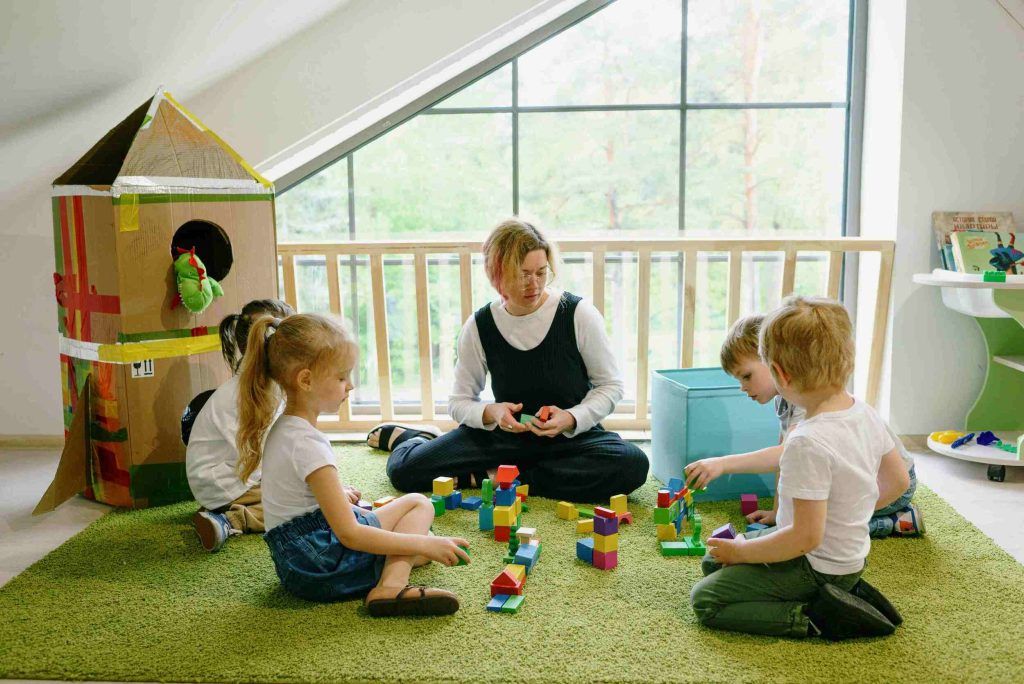
Establishing routines and expectations
Letting kids know what their routine is helps them to feel more secure and understand what is being expected of them. Consistency plays a crucial role in teaching kindergarten. A somewhat strict structure is important in managing the classroom and helping kids to focus.
Incorporating active breaks
Pre-schoolers have a very short attention span. Having an active break every 15 minutes is a good teaching strategy if teachers want their students to have good results and enhanced focus during lessons. There are plenty of active break activities out there, and every teacher can choose what suits the needs of the class best.
Encouraging creativity
Some creative expression is necessary in kindergarten environments. Practicing art, music, and drama is very helpful in fostering self-expression and emotional regulation, as well as in developing social skills, motor skills, and cognitive abilities.
Making a welcoming environment
Creating warm and inclusive classroom settings is vital for kindergarten. Young children need to feel welcome, secure, and open in order to have a positive learning experience. A colorful and comfortable classroom sets the tone for the whole day.
Elementary teaching strategies
Implementing good teaching strategies for elementary students is essential for setting children up for future academic success. Besides, combining different types of teaching strategies into one unique teaching approach to meet the needs of elementary-age kids is also a good idea.
Check out these top teaching strategies for elementary students below.
- Instructing small-group
- Implementing structured literacy
- Adding a student-centered approach to learning
Instructing small-group
Gathering students into small groups of 4 to 6 people allows teachers to work more closely with each kid and ensure that everybody keeps up. This is also a great tool to see if kids understand the material and follow the instructions as intended.
Implementing structured literacy
The top list of teaching strategies includes structured literacy. It involves explicit and systematic phonics instructions so the students are taught the rules and patterns of the language in a clear and organized manner.
Jen Jones, educator, and literacy expert, relies heavily on providing explicit phonics instruction and using decodable texts. She emphasizes that phonics teaches students the code to crack reading, and decodables give them practice applying those skills:
“I keep lessons and engaging using songs, chants, games, and movement.”
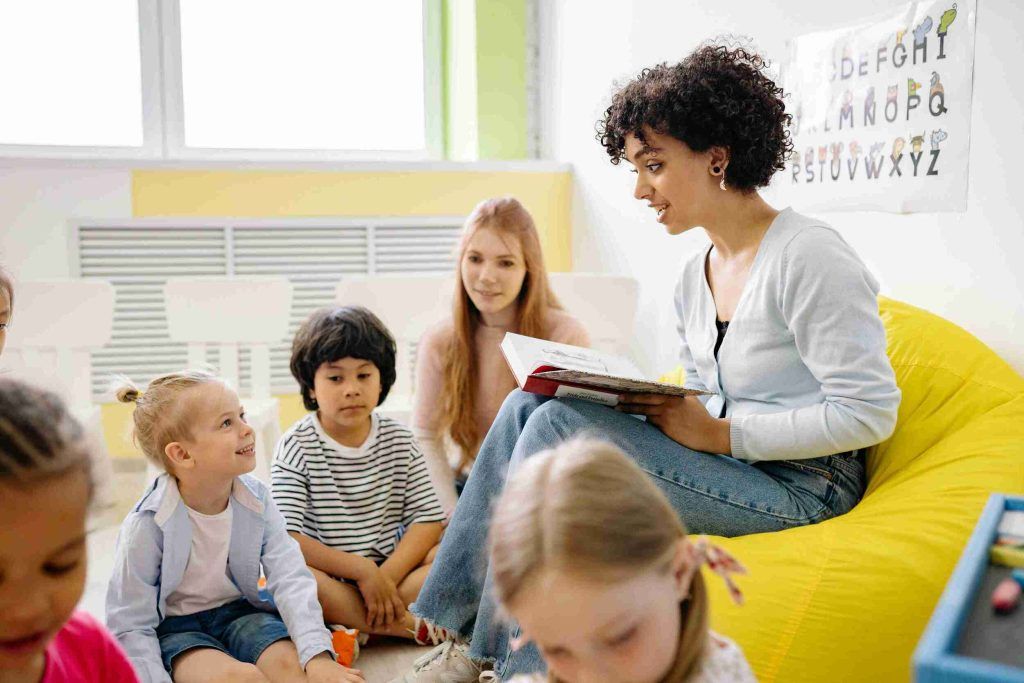
Adding a student-centered approach to learning
The idea of a student-centered approach has gained immense popularity over the years. Student-centered classrooms engage students in planning, preparing assessments, and implementing the knowledge they gained. Involving students in these decisions shifts focus from teachers to learners and places more responsibility and ownership on them. This way, children learn leadership and social skills.
Conclusion
To sum up, teaching strategies in 2025 will shift toward more personalized, engaging, and flexible learning experiences. Using a combination of different teaching strategies, teachers can create a dynamic and efficient learning environment for every student. Also, teaching strategies in 2025 will embrace AI and tech tools to enhance the learning experience and curriculum.
If you want to leverage the most prominent teaching strategies for your kid and enhance their STEM skills, you can always book a trial session with Brighterly! Our tutors will ensure the best possible teaching strategy personalized to your kid’s specific needs and knowledge gaps.

